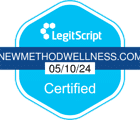“Prodependence” is the new buzzword in addiction healthcare today, promulgated by psychotherapist Dr. Robert Weiss, author of Prodependence: Moving Beyond Codependency. In his interview with The Book Brigade, published in Psychology Today, Dr. Weiss explains how prodependence is the new and improved version of the codependency model based in trauma theory. The main focus of the new paradigm shift is on celebrating loved ones’ commitment to stay connected to the individual in dual diagnosis treatment rather than looking at family members or significant others’ contributions to the individual’s addiction. This article discusses the primary differences between the prodependence and codependency models.
Difference in labeling
Codependency carries with it a negative connotation for those who are close to the individual with substance use disorders. It brings unintended shame to family members who feel blamed for their loved one’s drug and alcohol addiction, especially in discussions about early life trauma for the user. Words like “enmeshed” and “enabling” place the blame on others, viewing caregivers as “loving too much” or “loving selfishly.” The prodependence model aims to make families, friends and partners feel validated and supported in their efforts to help their loved ones recover from drug and alcohol addiction.
View on addiction as a disease
The view that addiction is a disease is appropriately applied to the individual with substance use disorder, but it should not be applied to families of users. For Dr. Weiss, this would mean that everyone, including the spouse, is partially to blame for the individual’s addiction. Addiction is a “family disease” in that significant relationships are negatively impacted by the individual’s substance use, and therefore they react to the heartaches and hardships of being close to someone with an active addiction. Dr. Weiss believes that no one should be held responsible for someone’s decision to use.
Deconstructing the Detachment Theory
In practical terms, the concept of “detachment with love,” which originated from Al-Anon, means creating a self-protective emotional distance between oneself and the loved one struggling with addiction. The detachment theory says, “The longer you are with [the addict] on the roller coaster of addiction, the less you are able to be helpful in any meaningful way.” The concept is rooted in the belief that loved ones cannot be very helpful if they stay “with the addict” through his or her ups and downs. While recognizing that close relationships might be a potential factor in perpetrating addictive behaviors, the prodependence model steers the focus away from detachment and emphasizes more effective connection with loved ones via better boundaries and self-care techniques.
Reframing love
Prodependence changes the clinician’s view of loved ones’ motivations behind their “enabling” behaviors. It replaces the stigma of codependence with positive expressions of love, removing blame and shame on the very ones who are proactively seeking addiction treatment on behalf of their loved ones struggling with substance abuse addiction. Prodependence turns ineffective love into effective love, guiding family members and significant others with healthy concrete ways to encourage connection, which in the long run is a powerful protective factor against relapse in the future. From Dr. Weiss’s point of view, there is no such thing as “loving too much.” It’s the clinician’s responsibility to help significant others love in a way that will be helpful and conducive to the individual’s recovery.
Family Education is Essential in Dual Diagnosis Treatment
The importance of close family relationships, or relationships with significant others, is recognized in dual diagnosis treatment. Family group therapy is an essential component of substance abuse treatment, which provides the necessary support for family members by helping them establish their own goals and boundaries in a way that will best serve them and their loved ones with substance use disorders. An industry leader in addiction treatment, New Method Wellness delivers high quality client-centered care for individuals and their families. Unique to New Method Wellness is their 3:1 staff-to-client ratio, meaning that every client is paired with two therapists to ensure excellence in treatment outcomes. It’s no wonder why Dr. Phil consistently recommends New Method Wellness as a premier dual diagnosis treatment center!
Learn more about holistic therapy and dual diagnosis treatment by calling 866.951.1824







